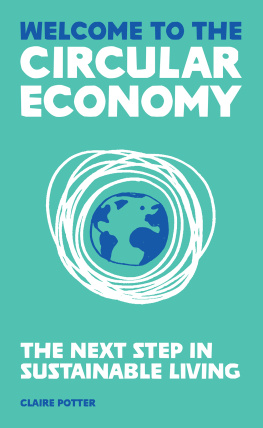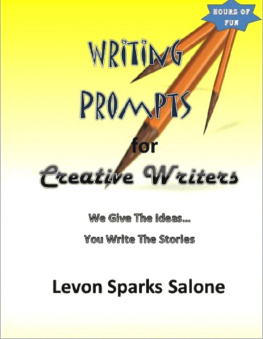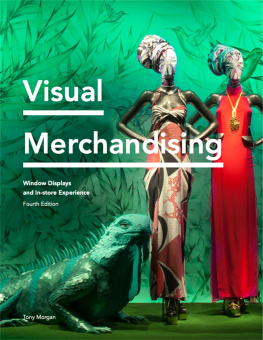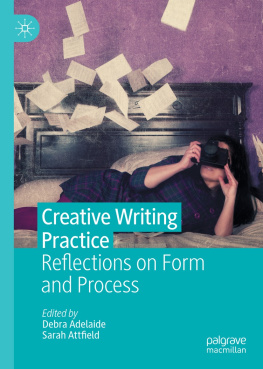CONTENTS
Guide
CONTENTS
We stand now where two roads diverge. But unlike the roads in Robert Frosts familiar poem, they are not equally fair. The road we have long been travelling is deceptively easy, a smooth superhighway on which we progress with great speed, but at its end lies disaster. The other fork of the road the one less travelled by offers our last, our only chance to reach a destination that assures the preservation of the earth.
Rachel Carson
YOU, ME, EVERYBODY
Early human cultures lived in balance with nature and the seasons. We survived through knowledge passed down by our elders how to find edible plants, where the clean water could be found and how to hunt. We took only what we needed to survive, like any other species on the planet. But now, some 200,000 years on, we find ourselves very far away from that point. The unprecedented, exponential growth of our population, the advancement of medicine and the Wests Industrial Revolution of the eighteenth century have enabled us to expand throughout the world, to live longer and demand more of the rock we call home. Even the new geological age of the Anthropocene (part of the Holocene, which began only about 12,000 years ago) is so named to define the period in which we, Homo sapiens, have had indisputable influence on the systems of the planet.
We have become the dominant force and changed the Earth and its environment from the atmosphere to the biosphere, the water to the land both for us and for everything that lives here. We have become self-appointed gods. And, as we all know, were not doing that well.
If left even slightly unchecked, global temperatures are set to increase by 34C (57F) above pre-industrial levels by 2100. We are changing our world in ways we never could have imagined or intended and the outlook is currently pretty bleak.
This book is not specifically about climate change and it is definitely not a scientific tome. However, everything we will explore in the coming pages is firmly rooted in science and framed with the long game in mind, which will allow us to thrive for many generations to come. So, in many ways it is completely about climate change and science.
It is definitely about people: you and me, your second cousin and the bloke down the road, the person you follow on Instagram from the other side of the world and the lady that walked behind the reporter on the international news last night. It makes no difference what political bias you have, or your gender, race or sexuality. It is about the behaviours, actions and mindsets of each and every one of us. Through our differences and our similarities, we need to find a collective way of working to support and rebuild our planet. We have a good precedent to work with: Nature and Earth have kind of been doing this for billions of years, so we have a good library of information to learn from.
Some of what we will talk about will make you sad; some of it will make you absolutely livid. But this is a book about hope. Action. And realizing that we are part of Nature, not apart from it.
Aha! I hear you cry. So, this is a book about sustainability? Erm, no. While I have used the term five times (yes, I counted), I believe that sustaining our business as usual approach is not good enough. You shouldnt and cant sustain something that is fundamentally broken, and our systems really are broken. In this book, we are going to investigate something new, with Nature as our teacher. We will cover a lot of ground, from economics and science to design and psychology, passing through consumer products, agriculture and zero-carbon technologies. The problems are complex, and we need to seek complex and interconnected solutions.
But this book will not teach you how to suck eggs. The very fact that you are holding it in your hand means that you already have the drive for positive change and you are probably doing great things already. In the coming chapters, well look at how we, as individuals, fit into the global landscape, how the decisions we make really do make a difference and how we can combine to demand more of our governments. Were going to dispel a few myths, but recognize everything you already do and build upon it, hopefully filling in some gaps in your knowledge along the way and giving you some tools to help you think about how you do things. Also, there will be doodling.
There will also be lots of one particular letter, one that picks up on things that you probably already do even without realizing. Just like the weekly alphabetic theme of Sesame Street, this book is brought to you by the letter R.
THE THREE Rs WHERE DID IT ALL START?
Growing up in the 1980s, I repeatedly encountered the mantra Reduce, Reuse, Recycle, at school, on the TV and in the books I read. It was quoted in the news, used in myriad environmental campaigns and I even had a t-shirt with it on. Whether we realize it or not, almost all of us could recite these three Rs: since the last century, they have become deeply ingrained in our collective mindset as stuff we should all do to protect the environment and be green.
But where did these three Rs come from? Well, were not really sure, but its likely they originated in 1970, after the first ever Earth Day. This saw nearly 20 million Americans join together to celebrate, campaign, protest and generally raise awareness of the growing environmental issues of the time while looking, both bleakly and optimistically, into the future.
One spark for Earth Day came from the book Silent Spring, by marine biologist and environmentalist Rachel Carson. Published in 1962, it foretold the collapse of biodiversity (and especially birds hence the title), from the then widespread use of the insecticide/pesticide DDT (dichloro-diphenyl-trichloroethane). Used to eradicate all manner of insects, DDT accumulated in the fatty tissues of birds and animals that came into contact with the chemical, causing indiscriminate death. For many, the realization that humans could effectively wipe out an entire species while also probably affecting their own health (DDT is now classified by the EPA as a probable human carcinogen) was a real wake-up call.

In turn, the first Earth Day prompted the formation of the US Environmental Protection Agency (EPA) in December 1970. At the same time, the Resource Recovery Act was passed by Congress to shift the focus of the public and the federal government alike to the activities of recycling, resource recovery and the conversion of waste into energy. This was likely the start of the Reduce, Reuse, Recycle mantra, which grew in popularity over the decade.
The three Rs function in an inverted pyramid. Pyramid diagrams are often used to show a hierarchy: the bigger the layer, the more important that layer is to the overall system it is something that should be completed or attained before the next, smaller segment. We have the same with our three Rs. First, we try to














